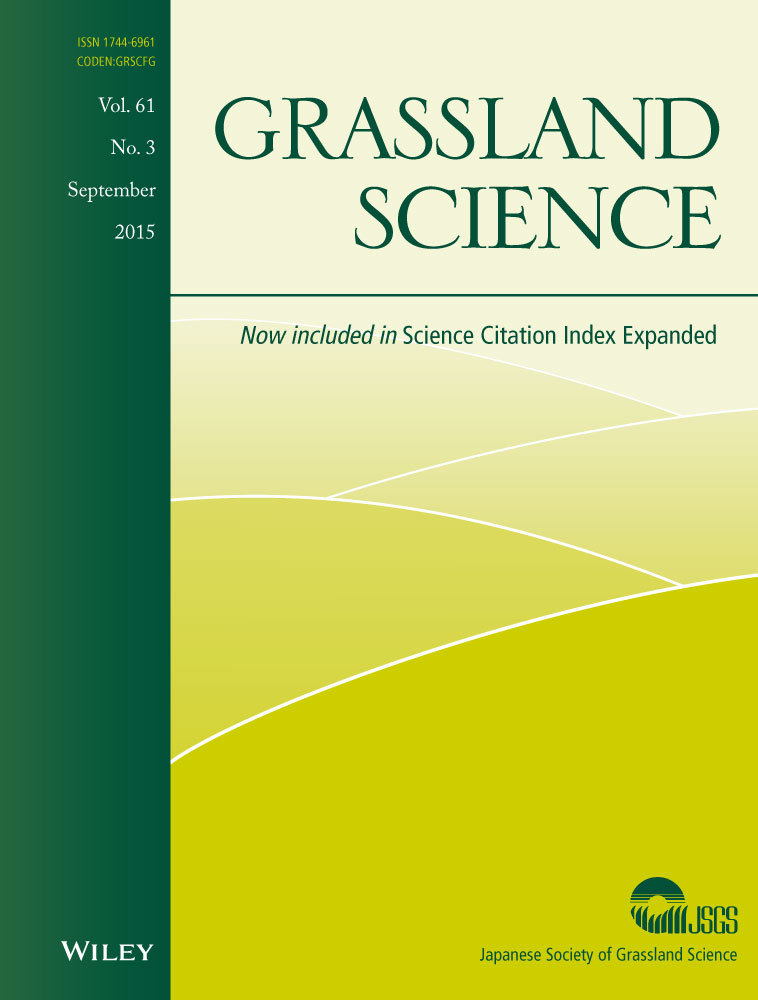Ver ítem
- xmlui.general.dspace_homeCentros e Institutos de InvestigaciónCIRN. Centro de Investigaciones de Recursos NaturalesInstituto de Clima y AguaArtículos científicosxmlui.ArtifactBrowser.ItemViewer.trail
- Inicio
- Centros e Institutos de Investigación
- CIRN. Centro de Investigaciones de Recursos Naturales
- Instituto de Clima y Agua
- Artículos científicos
- Ver ítem
Total and aboveground radiation use efficiency in C3 and C4 grass species influenced by nitrogen and water availability
Resumen
Absorbed solar radiation and radiation use efficiency (RUE) can be used to estimate net primary productivity of terrestrial ecosystems. In ecosystems dominated by grasses, belowground productivity cannot be neglected in terms of carbon balance because of the high proportion of biomass allocated to roots. The objective of this study was to quantify total RUE (tRUE), which includes both below and aboveground biomass of two C3 (Lolium perenne and Dactylis
[ver mas...]
Absorbed solar radiation and radiation use efficiency (RUE) can be used to estimate net primary productivity of terrestrial ecosystems. In ecosystems dominated by grasses, belowground productivity cannot be neglected in terms of carbon balance because of the high proportion of biomass allocated to roots. The objective of this study was to quantify total RUE (tRUE), which includes both below and aboveground biomass of two C3 (Lolium perenne and Dactylis glomerata) and one C4 (Cynodon dactylon) grass species, under four treatments with contrasting water and nitrogen availabilities. The ratios between tRUE and aboveground RUE (aRUE) for species and treatments were analyzed. The tRUE was calculated from measurements of incoming photosynthetically active radiation (PAR), the fraction of PAR intercepted and shoots and roots productivity in pot experiments. The highest tRUE values in the three species were found in the treatment without growth limitations (4.32–6.93 g MJ−1), while the lowest tRUE values were observed under water and nutrient deficits conditions (2.62–2.85 g MJ−1). Contrary to predictions from the optimization theory, one of the C3 grass species allocated relatively high biomass to the roots when water availability was high while for the C4 grass species the shoot:root ratios and the root mass fraction did not change under resource limitation conditions compared to ample resource availability. tRUE exhibited small changes in the C4 species with variations in resource availability while it did decrease substantially for the C3 species when at least one of the resources was limited. These results highlight belowground biomass importance in calculating RUE of grasses.
[Cerrar]

Autor
Cristiano, Piedad María;
Posse Beaulieu, Gabriela;
Di Bella, Carlos Marcelo;
Fuente
Grassland science 61 (3) : 131-141. (September 2015)
Fecha
2015-09
Editorial
Wiley; Japanese Society of Grassland Science
ISSN
1744-697X (Online)
Formato
pdf
Tipo de documento
artículo
Palabras Claves
Derechos de acceso
Restringido
 Excepto donde se diga explicitamente, este item se publica bajo la siguiente descripción: Creative Commons Attribution-NonCommercial-ShareAlike 2.5 Unported (CC BY-NC-SA 2.5)
Excepto donde se diga explicitamente, este item se publica bajo la siguiente descripción: Creative Commons Attribution-NonCommercial-ShareAlike 2.5 Unported (CC BY-NC-SA 2.5)

